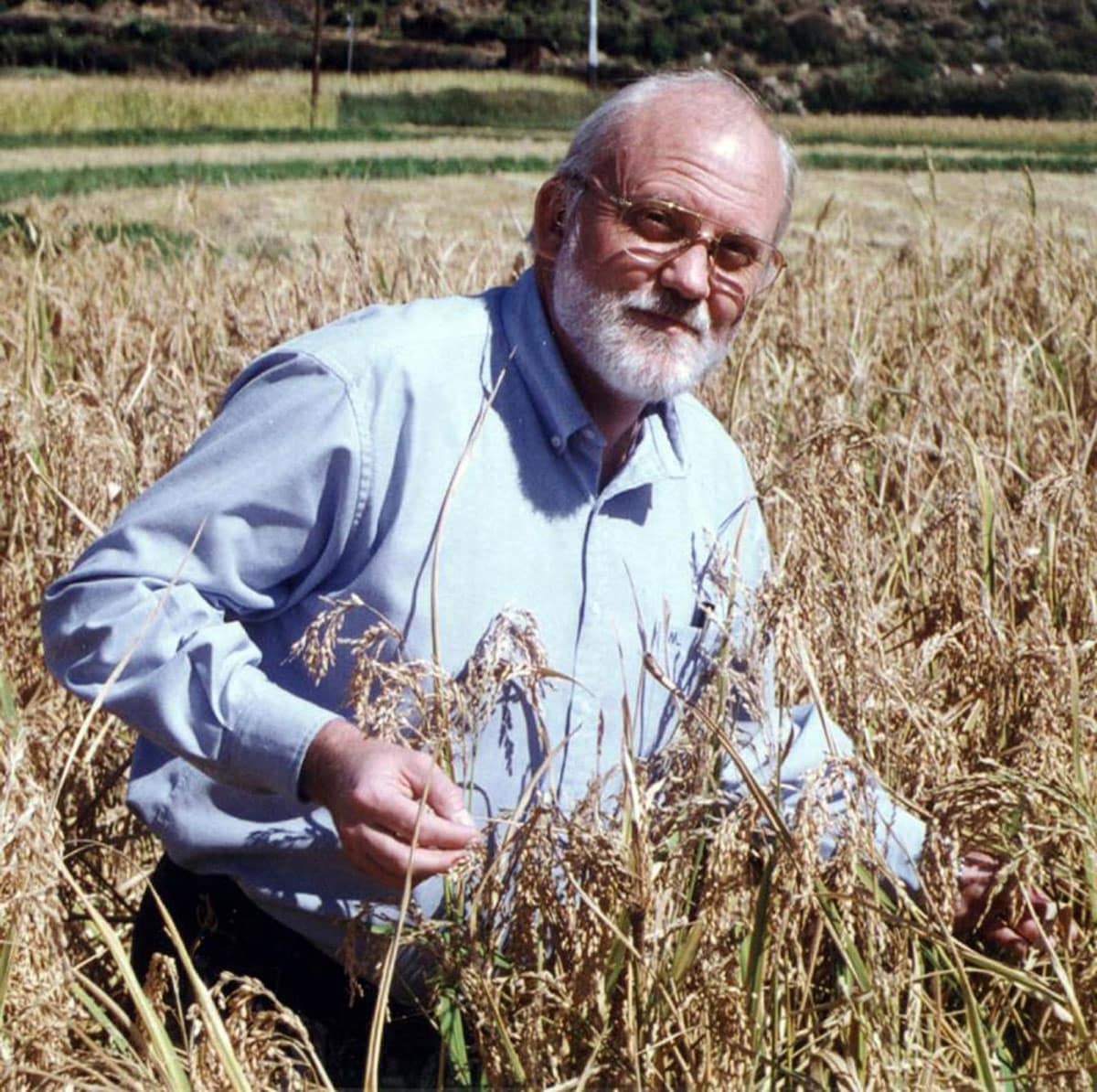Ten talented individuals serve on Grow Further’s advisory committee. Each of our advisors brings with him or her something special to the table. Some are experts in nonprofit management and philanthropic success. Others are award-winning nutrition experts or world-renowned agricultural scientists. As the former director of the International Rice Research Institute, Robert Zeigler brings both technical and management skill sets to the team.
A trained plant pathologist and rice scientist, Bob led the world’s preeminent institution for developing rice varieties yielding more food while fighting off pests, diseases, and other threats. He knows how major agricultural research organizations operate, having run one himself. He also knows a lot about how to make an organization like Grow Further thrive since he runs his own smaller-scale philanthropic operation, a nonprofit that provides travel grants for rice scientists.
From IRRI to Grow Further
Bob led the International Rice Research Institute (IRRI) for eleven years. He said his long career in food security has taken him to Latin America and the Far East, and now Portland, Oregon.
Initially, Bob sought to make a difference in the global cultivation of cassava, the subject of his doctoral research. However, a colleague eventually convinced him to make the shift to rice instead. He said his experiences with working on one of the world’s most widely cultivated crops, a daily staple for half the planet, was rewarding and challenging, but also frustrating at times given the multiple moving pieces that encompass agricultural research. His work on rice took a holistic approach, he explained to us, one that takes “the view of the world of the rice crop, the rice farmer, and what would be needed to increase that productivity sustainably.” Therein lies the challenge.
“You’re limited to working on individual problems or challenges or opportunities and technologies, but you’re condemned to working on that individual problem within an overall system that’s operating,” Bob said.
Grow Further’s founder and CEO, Peter Kelly, came to know Bob as Peter was developing the Grow Further concept and model. Bob recalled that he was hosting meetings for his foundation at the time of his first encounter with Peter. “At some point, Peter found out about us and came to our meetings because he was interested in how we were working,” Bob said. Peter attended every meeting, he recalled, “looking at what we’re doing that’s not working and what we’re doing that’s working, and hopefully learning from it and making Grow Further a more efficient operation.”
A model that works
Grow Further strives to promote greater global food security by sponsoring research into innovative solutions to boost smallholder farming. We gather our strength from partner institutions and our donor members, engaged individuals empowered to help us select worthy projects and follow with us researchers’ progress toward developing a more food-secure future. Bob said this funding model is worth pursuing, though it doesn’t come without its challenges. “The upside of living off member contributions is that there’s a lot of engagement,” he argued. “People are committed. We’re all committed.” The downside, he said, is the effort required to market yourself and get your organization and its cause noticed.
Since Grow Further’s inception, Peter has valued Bob’s advice, while Bob has admired Peter’s careful, deliberate, and thoughtful approach towards building up the organization and launching its work. Bob said he agrees with Peter’s point that far too many great ideas are overlooked by the major aid agencies and research institutions, like IRRI.
The people working at these agencies are evaluated based on how much money is spent and how large of an impact this spending produces, he explained. They manage multi-billion-dollar pools of money, and their overseers and funders expect them to spend as much money as they can with a finite team of experts and project evaluators, he explained.
“It costs the same amount of work to disburse $3 million as it does to disburse $30 million,” Bob said. “And somebody’s going to have to be able to absorb those investments. You can’t just go to a little community and say ‘Here’s $3 million, make sure it works, good luck’.”
Bob stressed in our talk that Grow Further is uniquely suited to catch those ideas that fall through the cracks, such as research on neglected crops. The US State Department formally recognized this last year by naming Grow Further as one of 9 Vision for Adapted Crops and Soils Champions.
Moving forward, Bob said the best advice he could give to Grow Further is to keep doing what we’re doing and to be patient—it will take some time for Grow Further’s investments in food security to reap meaningful, measurable rewards. “I would say continue with the very careful selection of projects,” he said. “Document them and follow up on your current investments. Don’t let them just sort of peter out. Plan continuity of investment.”
“Unless you make a very serious error in your initial investment, stay with it the longer term to allow things to grow and develop,” he added. “That would be my advice.”
— Grow Further
Photo credit: Robert Zeigler.




